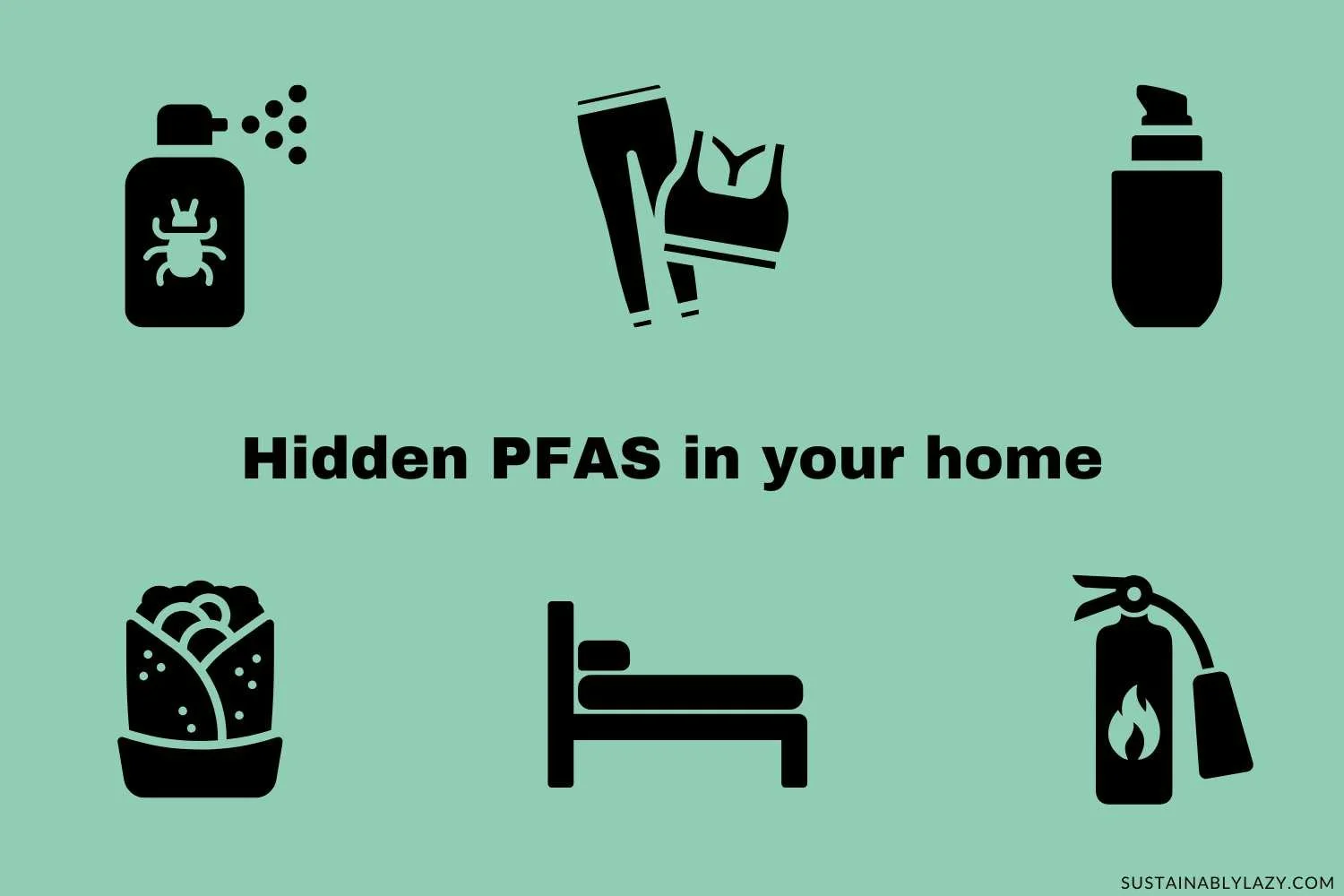The Health Risks Of Flame Retardants In Mattresses
Are you concerned about flame retardants in mattresses?
Same here!
Back when I was pregnant with my first child, I discovered that most mattresses on the market were soaked and sprayed with harmful chemicals.
I wanted to know more, so I started emailing companies to ask exactly what flame retardants they used in their products.
Guess what, nobody replied.
I realised then, I would have to do my own research.
I discovered that fire safety regulations are extremely outdated and that most products on the market prioritise profit over health.
In this blog post, I will reveal what flame retardants are used in the UK and USA, why they are harmful, and how to find a fireproof alternative without using toxic chemicals.
1. Why do mattresses contain flame retardants?
Between the 1950s and 1980s, when polyurethane foam (polyfoam) mattresses became popular, there was a large increase in house fires.
One of the reasons for this is that more people smoked inside and fell asleep in bed.
Polyurethane foam, which is derived from fossil fuels, is cheap to mass-produce. Unfortunately, it is extremely flammable and will rapidly go up in flames
In the 80s, there was a campaign to create fireproof cigarettes, but rather than address the impact of its products, Big Tobacco spent millions directing people's attention to the flammable fabrics.
Instead of focusing on preventing fires or switching to safer materials, governments passed legislation to enforce strict national standards requiring mattresses to be fireproof against matches and cigarettes.
Because synthetic foam is so flammable, it requires a large quantity of flame retardant chemicals to slow the time it sets on fire.
While making flammable mattresses fireproof might not sound like the worst idea, it is not as safe as it sounds.
Flame retardants cause smoke to become up to three times more poisonous.
Because most mattresses are made from synthetic foam, manufacturers have to mix or spray on flame-retardant chemicals to slow the spread of fire.
Research has revealed that when these chemicals burn, they produce high levels of the toxic gases carbon monoxide and cyanide.
So if a fire does happen, you are more likely to die from inhaling the smoke than you are from burning.
In the UK, where fire regulations are super strict, flame retardants only briefly delay fire igniting.
A study found it only takes 5-8 minutes for fireproofed UK furniture to blaze.
Whereas, furniture made with high-quality materials that aren’t flammable and contain no flame retardants took 15-20 minutes to blaze.
This shows that fire safety regulations are not only harmful to people's health, but they are seriously outdated.
And if cigarettes are the main cause of house fires, why do we need to be spraying newborn baby and toddler mattresses with them?
2. Do beds still have flame-retardant chemicals in 2024?
Yes, by law, mattresses need to be fireproof in many countries around the world but don’t worry, flame-retardant chemicals are not the only way to achieve this.
Here are some locations with laws that require mattresses to contain flame retardants or meet specific fire safety standards:
The United States
Canada
The United Kingdom
Ireland
EU
Australia
Japan
How are flame retardants added to mattresses?
There are multiple ways flame-retardants can be applied to mattresses including:
Mixed into the foam during manufacturing
Added as a coating or a treatment to the outer layer of the fabric (like the cover or quilting)
Infused into the fibres during manufacture (in the padding or outer cotton layers)
How are mattresses tested?
Regulations and testing can vary by location but may involve tests like the smouldering cigarette.
This involves putting a cigarette on a test rig and allowing the entire thing to burn. The product passes fire standards if no flames or smouldering are observed.
As most mattresses are made from flammable materials, like foam, which fire can spread rapidly across, manufacturers have to add fire retardant chemicals to ensure that someone smoking in bed will not accidentally set it on fire.
3. What are the different types of flame retardant
There are hundreds of different flame retardants and you would need a degree in chemistry to understand them all.
I noticed that they can be grouped into categories based on whether they contain bromine, chlorine, phosphorus, nitrogen, or metals.
The main categories are:
Halogenated flame retardants (bromine and chlorine)
Phosphorus-containing flame retardants
Nitrogen-containing flame retardants
Metals (inorganic)
I’m going to share a bit about the most commonly used flame retardants that have not been banned or phased out yet:
Brominated Flame Retardants
Brominated Flame Retardants (BFRs) are widely used in mattress foam in Europe and the USA.
BFRs release bromine atoms that slow down the combustion process, making it harder for the flames to spread quickly.
Some BFRs can be toxic to humans. They can accumulate in our bodies, interfering with hormones and affecting reproduction.
Exposure to BFRs has been linked to negative effects on brain development, particularly in children, potentially leading to learning and behavioural issues.
Organophosphate Flame Retardants
Organophosphate flame retardants contain phosphorus atoms bonded to organic (carbon-containing) groups. They work by promoting the formation of a protective char layer on the material's surface when exposed to heat
These flame retardants are increasingly used as alternatives to older, more harmful types.
Some organophosphates can be toxic if they get into the body, especially in large amounts or over long periods. They can enter the body through inhalation, skin contact, or ingestion.
Exposure to certain organophosphate flame retardants has been linked to effects on the nervous system, potentially causing problems with brain development and function, particularly in children.
Some organophosphates have been labelled carcinogenic.
antimony trioxide
Antimony Trioxide is an inorganic flame retardant that can migrate into the air and dust. It is often referred to as one of the safer options.
Long-term exposure has been linked to respiratory issues like asthma, skin irritation, and potentially cancer.
The National Toxicology Programme reviewed peer-reviewed literature and found Antimony Trioxide to be “reasonably anticipated to be a human carcinogen.”
The International Agency for Research on Cancer (IARC) has classified antimony trioxide as a possible human carcinogen (Group 2B).
Melamine Flame Retardant
The most common nitrogen-containing flame retardants used in plastic and polyfoam are melamine-based.
When these materials are exposed to high temperatures or flames, melamine can decompose and release various nitrogen gases, including ammonia.
Ammonia can pose health risks due to its irritating and potentially harmful effects on the respiratory system, eyes, and skin.
Melamine flame retardants are less common because manufacturers have to use a large quantity of melamine compared to its alternatives which is expensive and unsustainable.
Other health risks associated with flame retardants
Endocrine Disruption: Flame retardants can interfere with hormone systems, potentially affecting growth, reproduction, and development.
Neurotoxicity: Exposure to flame retardants has been linked to negative impacts on brain development and function, particularly in children.
Cancer: Some flame retardants are considered possible human carcinogens, meaning they might increase cancer risk with long-term exposure.
Bioaccumulation: many flame retardants persist in the environment and accumulate in human and animal tissues, leading to long-term exposure risks.
4. Do all mattresses have flame retardants?
No, not all mattresses have flame retardants. Organic mattresses without chemical flame retardants can still meet fire safety laws through alternative methods.
Here’s how organic mattresses meet fire safety regulations without relying on flame retardants:
They use natural fire-resistant materials instead of synthetic foam - wool, natural latex, and coir are natural materials that have a high resistance to fire. Coir comes from coconut husks and does not need treatment, while wool can even self-extinguish when ignited!
They use fire-resistant barriers made from natural materials - for example, a layer of wool can be added below the cover to act as a barrier.
Thicker mattress construction - natural mattresses may be thicker or have multiple layers of natural materials that slow down the spread of flames.
Fireproof covers or outer layers - These covers often do not contain chemicals but are constructed from materials that naturally resist fire. For example, tightly woven fabrics or blends of natural fibres such as hemp or flax may offer enhanced fire resistance.
5. How to choose a safe, non-toxic mattress?
Here are some tips for choosing a non-toxic mattress with no flame retardants:
Look for certifications - GOTS organic, Oeko-Tex
Check its made from natural materials - avoid synthetic foam
Check for flame retardant-free labels - the company will often advertise if the product is chemical-free
Ask the manufacturer - if you’re unsure, send them an email
Sustainably Lazy is making sustainable choices simpler for conscious consumers around the world. If you love what we do, please support our work by sharing this post with your friends. For the price of a cuppa you can also help us inspire thousands more people.









